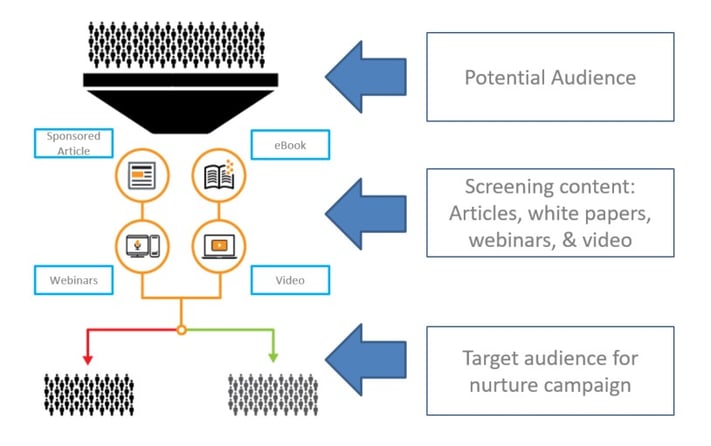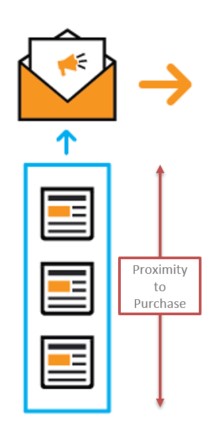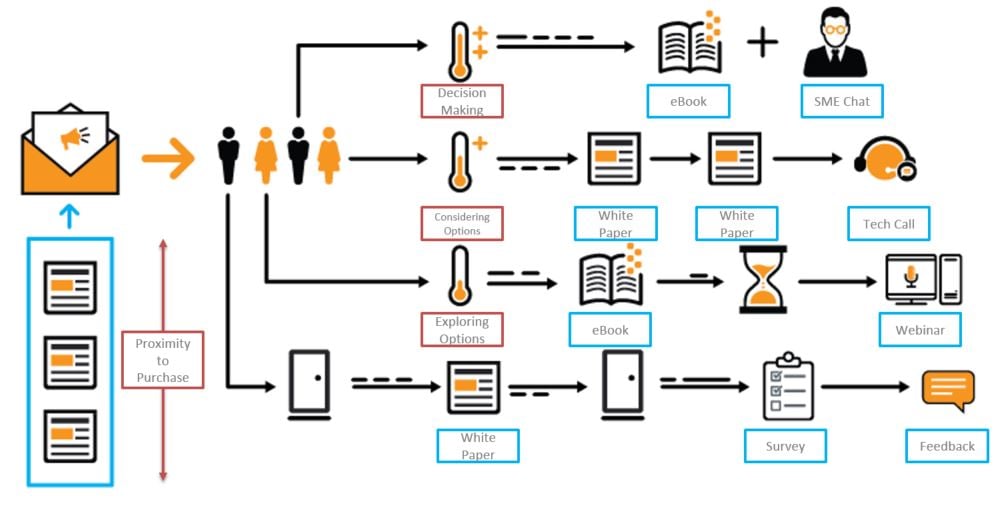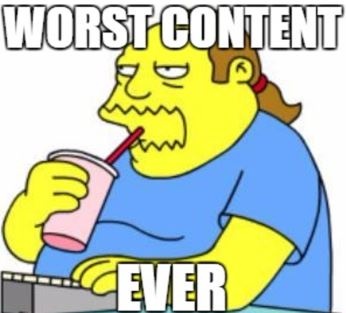What makes engineering so special? Many would answer it’s because engineering is a discipline that betters the world by pushing the boundaries of innovation. But as we heap praise on engineers for pushing the boundaries of innovation, I’m left asking where is the love for the engineering marketers who innovate in the marketing space?
I’m always incredibly impressed with how curious many marketers are with nascent marketing tactics. Regrettably, while many express curiosity, at the end of the day (or quarter) they get so worried about hitting their lead gen goals that they forego experimenting with something new. Instead, they default to the tactics that are well understood and “good enough”.
This isn’t the story of marketers playing it safe – It’s the story of a few brave marketers who said, “let’s shake it up and do something new” with a Lead Nurturing Campaign and reaped the rewards. But don’t take my word for it, take a look at the numbers themselves:

How this Guide Works
The remainder of this post will walk you through all of the knowledge we’ve developed running lead nurturing campaigns over the last year. We’ll start with the basics for those unfamiliar with the process and then get into the specifics. I have 2 goals in this post – 1, that by the end of this post you have enough understanding and knowledge of how Lead Nurturing works that you can try it yourself – 2, to provide you with first hand knowledge from running these types of campaigns myself. This way, you can make your own informed decision on whether or not you want to tackle this complex but highly powerful tactic.
If you are familiar with the concept, you might want to skip down to the section that starts with “Building a Campaign.”
What is Lead Nurturing?
Lead Nurturing is a highly-structured approach to segmenting and targeting your customers to usher them along the sales pathway. It requires direct contact with your client, most often through email. When done effectively, it’s a mixed short & long-term play. A single nurture campaign runs between 4-6 weeks, but to reap the full benefits of this tactic you need to think long term and chain Nurture Campaigns together.
Once running, customers who are ready to purchase are quickly surfaced (short term) and those for whom a purchase decision is farther off (long-term) are fed content at a pace corresponding to their place within the sales journey. This steady contact ensures that your company is top of mind when they enter buying mode.
With Lead Nurturing, you are deliberately constructing a narrative that reflects your customers’ prototypical buying journey
At its core, Lead Nurturing is simply good story telling topped with some technology sprinkles. With Lead Nurturing, you are deliberately constructing a narrative that reflects your customers’ prototypical buying journey. This allows your future customer to self-select and signal to you their current level of interest. The next step is completing the story for them at a pace they’re comfortable with. This is where the technology comes in.
Technology allows for Lead Nurturing to be dynamic and responsive to your future customers behavior. It ensures you’re delivering the right message at the right time, building a connection with your soon to be customer and avoiding becoming just another message in their inbox. This is done using built-in logic, most often in the form of “if/then” conditions that trigger based on specific actions (or inactions).
Lead Nurturing requires constant monitoring of the clients interaction with your content, so to do this effectively you’ll really need some kind of automated system in place unless you have a very small client list. Luckily, most content management or mass mailing tools have this functionality built in.
Building a Campaign
Step 1: Building Out Your Target Audience
The first step in creating a Nurture Campaign is to build out your target audience. Any content on your website that collects contact information can be used to onboard people into your nurture campaign.

I personally would consider trying to nurture anyone who has provided you their contact information, but to do so effectively you’ll need to develop different Nurturing Campaigns for each buyer persona you deal with. What you send to a C-Suite Level executive should be different from what you send to a plant manager. However, for a first attempt at using this tactic, I would recommend going broad and using screening to filter out only contacts that are clearly a bad fit for your company. Once you’re first nurture campaign is done, you can review the results and see what segments of your audience the campaign resonated with and where the campaign fell flat.
If you have trouble determining what to screen on, asking your sales reps is a good place to start. To get you started, here’s a list of criteria I would recommend screening and not screening on:

Step 2: Your First Nurture Touch Is All About Creating a Self-Selection Signal
Once you have screened your contact base, you’ll have a pool of prospects to start with. You may also have second pool of prospects that you’ve purchased from a publisher or some other source. That’s cool, drop them into your Nurture Campaign. Depending on what kind of content your contacts originally converted on, you may have some idea already of their level of purchase intent. For those contacts you can either re-qualify them during this phase or pass them directly on to stage 3. 
In the diagram to the right I’ve simplified the self-selection process into 3 stages with 3 corresponding resources.
Think of the stages as 1. beginning of purchase funnel, 2. middle of purchase funnel, and 3. bottom of purchase funnel. Based on how your future customer interacts with this initial volley of content will determine what action you take next.
Throughout a nurture there are numerous types of content you can use. Basically, anything that has shown good conversions on your site should make it into the mix at some point. That being said, for your first interaction as part of the nurture I suggest using white papers and only white papers. First, we’ve found that it’s easiest to find or develop white papers that correspond to specific points in the sales journey. Secondly, white papers are reasonably inexpensive and you probably already have a handful to start with. Finally, by not mixing resource types you control for confounding variables which makes your post campaign analysis easier.
Next, do your best to match the content to the stage in the buyer’s journey. To identify those who are furthest from making a purchase use a whitepaper with a title such as “Top 10 most common problems encountered by Machine Shops,” whereas for those closest to a purchase use something like, “What you Need to Consider When Deciding Which 5-Axis Machine to Buy.”
Step 3: The Paths to Purchase
Having allowed your customers to signal to you their place in the sales journey, you now know where to slot them into your Lead Nurturing content delivery pathway. Continuing with our example of 3 states – beginning, middle, and end – here is an example diagram of a campaign.

So what are we seeing here? The first thing you’ll notice is the signaling that we discussed earlier has occurred and now we have 4 people (representing groups) who have passed through. Let’s go through the pathways starting with the hottest contacts and working our way down.
Decision Making (final purchasing stages): These people are likely in a buying cycle because in the previous step they converted on a resource that signals that. Let’s send them an eBook that goes into detail about all the benefits of our product. At the same time we invite them to schedule a sales call with one of our subject matter experts (SME) to address any questions they already have or that come out of reading the eBook. If they ignore what you do here, conclude that the initial conversion was erroneous and see what happens when you send them a mid-sales journey resource.
Considering Options (middle stages): Here we’re trying to move future customers closer to making a decision. To do that we’re going to send them a couple of white papers, with each one being a little closer to the buying decision. Our final Call to Action will be to schedule a call with a technical expert who can discuss why your solution is so great.
Logic will be built in to upgrade or downgrade the contacts proximity to purchase based on their actions. For instance, we could say that if a prospect converts on the two white papers, we skip the final Call to Action (tech call) and immediately upgrade our estimation of their proximity to purchase to decision making. We instead then send them that pathway’s eBook and invite them to talk with an SME. Alternately, if they ignore the white papers maybe we were wrong about them being in mid cycle, so let’s downgrade them to the exploration phase and send them resources from that level.
Exploring Options (initial stages): We believe this group is a ways off from entering buy mode so we send them a white paper that address a couple top level concepts. If they convert then we usher them into the mid purchase pathway in hopes that they continue their converting behavior. If they don’t show any interest at all, we back off a little because we don’t want to bother them and become a pesky marketer. Instea
d, we wait a couple weeks/months and then send them a webinar invite because everyone loves webinars.
The Closed Door (the dreaded 4th State): Some guys won’t convert on any of your content. That sucks, but it happens. Give it another go with a killer piece of content even if it isn’t directly in the wheelhouse of your campaign.
I’ll give you an example. We did one campaign dealing with IoT solutions. There was one piece of content we had that was over a year old, but it was a conversion machine. We’re talking 10x conversion rates compared to a typical whitepaper. So when Mr. Ignoremyemails wouldn’t click on anything, I sent him my conversion Ace-in-the-Hole. It didn’t save the day and convert everyone, but it sure did prove some of these people had pulses. Once reactivated we dropped these people in the Exploring Options pathway and away they went.
Sometimes though your best-content-ever doesn’t even work. Send them an invite to provide some feedback.
You’ll likely learn something useful even if only a few respond. Maybe they just concluded a purchase and you were too late. That’s fine, you can put them on a schedule to follow-up 6 months out. Or possibly they left the company and are now somewhere else. You can always ask if they know who replaced them and ask for an introduction.

Finally, the closed doors should never be discarded. They aren’t lost causes, they’re just future, yet-to-be-converted customers. You’re going to place them in a long-term nurture, a nurture that will drop content in their lap every few months, just to see if they’re now paying attention.
Step 3 point 2: It’s not a Straight Line, It’s a really Squiggly One
While we’d all love for the sales journey to be a straight line, in most cases there is some bouncing around and it’s slower than we’d like. While we do our best to direct people towards a sale our best efforts won’t do anything if they have a non-existent budget, or have been told to use another solution for now, or are focused on something else. This is a common occurrence in the world of engineering because sales cycles are usually very long and that leaves a lot of opportunity for a company to revise how it will allocate its budget which will impact proximity to purchase.
As such, the Nurture Campaign needs to have to built in flexibility and branching logic to prevent you from getting out of sync with your future customer’s informational needs and what you’re sending to them.
The good thing is that as long as you’re sending them relevant content you’re building both interest and trust, even if you’re not moving them along at the pace you’d like down the sales journey. You can be confident that once things change you’ve done your part to build a relationship that places your company at the top of their list. Furthermore, by keeping them engaged you’ll accelerate their eventual move to buying mode by ensuring both the problem their facing and your solutions are top of mind.
“Every New Beginning Comes
From Some Other Beginning’s End”
All 90s nostalgia aside, the above quote is very true of nurtures. Good nurture campaigns flow into the next great nurture campaign. Feedback mechanisms can be either explicit, like a survey or phone conversation, or passive like knowing that a contact always reads mid purchase journey content but ignores end stage content. This allows you to slot them appropriately in to your next Nurture or even design a special campaign just for them.
Other Considerations
All of these stages for simplicities sake have been described as if they’re singular events. They are not. As this is primarily (almost exclusively) an email marketing tactic you need to build repetition into your delivery mechanism for when people just miss your email.
Regarding content, we’ve found that white papers reflecting the various points in the sales journey most closely correlate with actual interest levels in a product or service. We’ve also found, sadly, that pre-recorded webinars generate lower levels of interaction than any other type of resource. We’re current building up our data set on the nurturing impact of webinars, eBooks, infographs, and other types of content. While I don’t have any data on how effective they are to nurtures, we know from other campaigns that many engineers really enjoy these types of resources.
When you’re designing your campaign, ensure that you are building in sufficient time between touches. A good rule of thumb is 3B7: Send them something, if no interaction wait three days and send again, if nothing wait seven days and reach out a final time before triggering an action like downgrading them.
You’ll also need to first guess (and later experiment with) the time needed between your Lead Nurturing Campaign’s automated actions. For example, you don’t want to have your system immediately send a new whitepaper just because a contact has downloaded a whitepaper you sent this morning. It’s unlikely they’ve digested the first one and that kind of rapid “I’m watching you!” monitoring is creepy.
Avoid creepy at all costs. For most campaigns, I generally schedule 3-5 days following a positive event for the next step in the Nurture. For negative events, I use 7, 14, and 30 days, with longer touches going to customers who have shown the least interaction. I don’t want to forget about them, but I want to avoid being that annoying marketer who doesn’t get the hint.
Closing Thoughts
I hope you have found some value in this post. I’ve tried to cover everything you’ll need to know while keeping it software/product agnostic.
If you’d like to actually have a step-by-step guide to setting up a campaign (or series) of campaigns like this please let me know in the comments or via email. I’m always happy to take questions.
And as a Thank You for sticking it out this long here’s Semisonic’s 1998 Magnum Opus.
P.S. Throughout this post you’ll probably have picked up on me calling everyone in your nurture your future customer. That’s how you need to think about nurturing. You’ll definitely get a bunch of them today, or in a month’s time, but most won’t convert over the course of a single nurture campaign. Don’t give up, build your campaigns so no customer is ever left behind. Over the long-run you’ll create a whole lot more value approaching your campaigns this way.
Thanks,
Andrew





